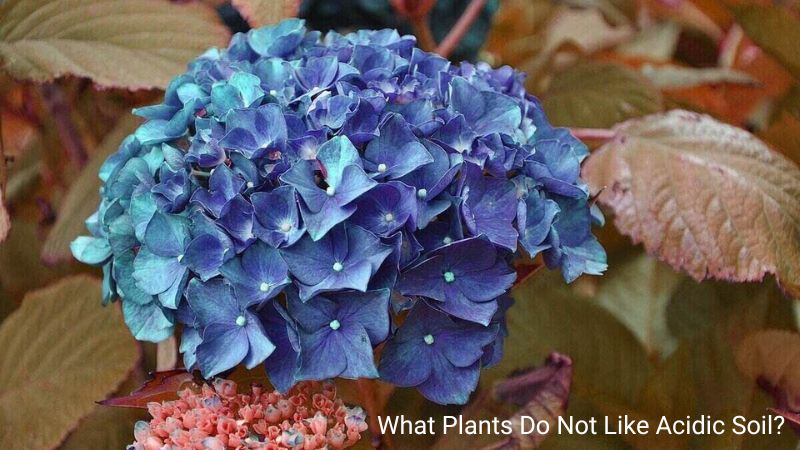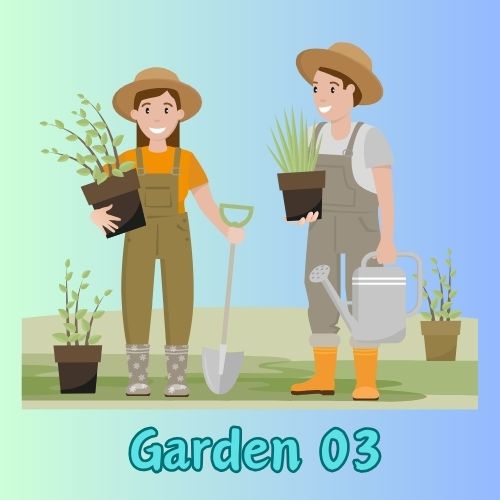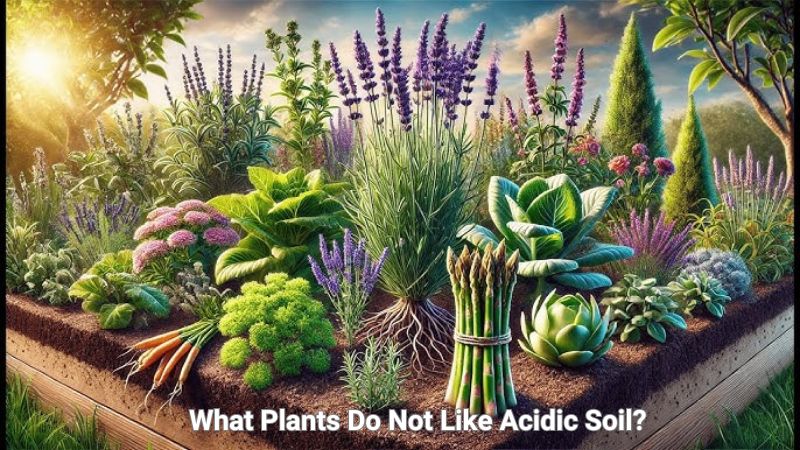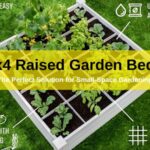Soil pH is a crucial factor in determining the health and growth of plants. While some plants thrive in acidic conditions, many species struggle to grow in such soils. In this article, Garden 03 will explore the topic of “what plants do not like acidic soil”, providing detailed insights into why certain plants prefer neutral or alkaline conditions. Understanding soil pH and its impact on plant growth can help gardeners make informed decisions and ensure their plants flourish.
What is Soil pH?
Soil pH is a measure of how acidic or alkaline the soil is. The pH scale ranges from 0 to 14, with a pH of 7 being neutral. Soils with a pH below 7 are considered acidic, while those with a pH above 7 are alkaline. The pH level of the soil affects nutrient availability, microbial activity, and overall plant health. Therefore, knowing the pH of your soil is essential for creating an environment where your plants can thrive.
The Importance of Soil pH for Plant Growth
The soil pH level influences the availability of nutrients in the soil. Certain nutrients, such as nitrogen, phosphorus, and potassium, are more accessible to plants when the soil pH is within a specific range. Most plants prefer a slightly acidic to neutral pH (6.0-7.0), but there are exceptions. For those wondering “what plants do not like acidic soil”, it’s crucial to understand that these plants require a higher pH to absorb essential nutrients effectively.
Signs Your Soil is Too Acidic
Before identifying the plants that dislike acidic soil, it’s important to recognize the signs of acidic soil. Some indicators include:
- Poor plant growth: Plants may appear stunted or produce fewer flowers and fruits.
- Yellowing leaves: A lack of essential nutrients like magnesium and calcium, which are less available in acidic soil, can cause yellowing leaves.
- Soil test results: The most accurate way to determine soil pH is through a soil test.
Now that we understand the basics of soil pH, let’s dive into what plants do not like acidic soil and why.
Plants That Do Not Like Acidic Soil

1. Lavender (Lavandula spp.)
Lavender is a fragrant and popular plant known for its beautiful purple blooms. However, it requires well-drained soil with a pH of 6.5 to 7.5 to thrive. Acidic soil can lead to poor growth, reduced fragrance, and fewer flowers.
Lavender prefers dry, slightly alkaline conditions, making it a perfect choice for rock gardens or sunny, well-drained spots in your garden.
2. Clematis (Clematis spp.)
Clematis, a popular flowering vine, is another plant that does not tolerate acidic soil. This plant prefers neutral to slightly alkaline soil (pH 6.5-7.5) to produce its stunning blooms. In acidic soil, clematis may experience nutrient deficiencies and produce fewer flowers.
To ensure your clematis thrives, consider adding lime to raise the pH of your soil if it’s too acidic.
3. Lilac (Syringa spp.)
Lilacs are known for their fragrant blooms and are a staple in many gardens. However, they do not fare well in acidic soil. Lilacs prefer soil with a pH of 6.5 to 7.5. In highly acidic soils, lilacs may struggle to bloom and experience yellowing leaves.
Adding garden lime can help raise the pH and create a more suitable environment for lilacs.
4. Daylilies (Hemerocallis spp.)
Daylilies are hardy perennials that can tolerate a range of soil conditions, but they do not thrive in highly acidic soils. They prefer a neutral to slightly alkaline soil with a pH between 6.5 and 7.5.
If your soil is too acidic, daylilies may not produce their characteristic vibrant blooms. Amend the soil with lime if necessary.
5. Hibiscus (Hibiscus spp.)
Hibiscus is a tropical plant that thrives in warm, sunny conditions but does not do well in acidic soil. Hibiscus prefers soil with a pH between 6.0 and 7.0. Acidic soil can hinder nutrient uptake, leading to yellowing leaves and poor flowering.
To help hibiscus flourish, ensure the soil is well-drained and consider testing the pH to make adjustments as needed.
6. Hostas (Hosta spp.)
Hostas are shade-loving perennials prized for their lush foliage. While they can tolerate a wide range of soil conditions, they do not thrive in highly acidic soils. Hostas prefer soil with a pH of 6.5 to 7.5.
In acidic soils, hostas may struggle to absorb essential nutrients, leading to stunted growth and yellowing leaves. Amending the soil with lime can help create a more favorable environment for these plants.
7. Peonies (Paeonia spp.)
Peonies are long-lived perennials known for their large, showy blooms. These plants prefer slightly alkaline soil with a pH of 6.5 to 7.5. In acidic soil, peonies may struggle to bloom and develop yellow leaves due to nutrient deficiencies.
To keep peonies healthy and vibrant, consider adjusting the pH of your soil by adding lime if necessary.
8. Yarrow (Achillea millefolium)
Yarrow is a drought-tolerant perennial that thrives in well-drained soil with a neutral to slightly alkaline pH (6.5-7.5). Acidic soil can lead to nutrient deficiencies, causing poor growth and fewer flowers.
If your yarrow is struggling in acidic soil, consider raising the pH with garden lime.
9. Cucumbers (Cucumis sativus)
Cucumbers are popular garden vegetables, but they do not thrive in acidic soil. Cucumbers prefer soil with a pH between 6.0 and 7.5. Acidic soil can lead to poor fruit development and stunted growth.
Testing your soil and adjusting the pH with lime can help cucumbers grow strong and produce an abundant harvest.
10. Spinach (Spinacia oleracea)
Spinach is a cool-season leafy green that prefers neutral to slightly alkaline soil (pH 6.5-7.5). In acidic soil, spinach may experience stunted growth and yellowing leaves due to nutrient deficiencies.
Amending the soil with lime can help create the ideal growing conditions for spinach.
How to Adjust Soil pH
Now that we’ve identified what plants do not like acidic soil, it’s important to know how to adjust your soil pH to accommodate these plants.
- Test Your Soil The first step in adjusting soil pH is to conduct a soil test. This will help you determine the current pH of your soil and how much adjustment is needed. You can purchase a soil test kit from a garden center or send a sample to a soil testing lab.
- Add Lime to Raise Soil pH If your soil is too acidic, adding garden lime (calcium carbonate) can help raise the pH. The amount of lime required depends on the current pH and the type of soil you have. Sandy soils require less lime, while clay soils may need more.
- Monitor pH Levels After adding lime, it’s important to monitor the pH levels over time. It may take several months for the pH to change, so patience is key. Retest the soil after a few months and make additional adjustments if necessary.
- Consider Planting in Raised Beds or Containers If adjusting the pH of your garden soil is too challenging, consider planting in raised beds or containers. This allows you to control the soil conditions more easily, ensuring your plants receive the ideal pH environment.
Conclusion
Understanding what plants do not like acidic soil is essential for any gardener looking to create a thriving garden. By recognizing the signs of acidic soil and taking steps to adjust the pH, you can create the ideal growing environment for plants that prefer neutral or alkaline conditions.
From lavender to clematis, lilacs to spinach, many plants require a specific pH range to thrive. By testing your soil and making the necessary amendments, you can ensure your garden is filled with healthy, vibrant plants that grow and bloom beautifully.
Remember, soil health is the foundation of successful gardening. With the right knowledge and care, you can cultivate a garden that flourishes, no matter the pH of your soil.





